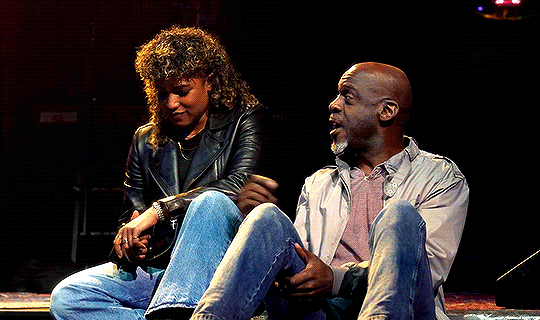#peter sarnak
Explore tagged Tumblr posts
Text







First look at The Lonely Few @ MCC Theater
#theatreedit#musicaltheatreedit#musicaledit#wlwsource#the lonely few#zoe sarnak#lauren patten#taylor iman jones#damon daunno#thomas silcott#helen j shen#peter mark kendall#six the musical#jagged little pill#hadestown#oklahoma!#sry for cross-tagging#**#the lonely few musical
32 notes
·
View notes
Text
Toplumcu bir matematikçi portresi olarak Cahit Arf

Cahit Arf 1910 yılında Balkan yarımadasında bir Osmanlı şehri olan Selanik'te doğar. 1912'de Balkan Savaşı'nın başlamasıyla birlikte ailesiyle İstanbul'a taşınırlar. 1934 Soyadı Kanunu çıkarıldığında, ailesi Arf kelimesini özgün bir soy isim yaratmak maksadıyla Arif’ten türetirler.
Gençlik yılları
Cahit Arf’ın çocukluğu Balkan Savaşlarını, Birinci Dünya Savaşı'nı, Çanakkale Muharebesi’ni, Batı Anadolu’daki Yunan işgalini ve İstanbul'un İtilaf Devletleri tarafından işgalini kapsıyor. Mustafa Kemal ve arkadaşları 1919'da işgalci güçlere ve saltanata baş kaldırdığında, Cahit Arf'ın posta ofisinde çalışan babası Ankara'ya taşınmaya ve bu devrimci hareketin saflarına katılmaya karar verir.
Cahit Arf 13 yaşındayken, Türkiye bağımsız bir cumhuriyet olarak ortaya çıkar. Yeni Cumhuriyet fakirdir ve sayısız savaş nedeniyle maddi kaynaklardan yoksundur; ancak toplumda umut uyandırmayı başarır. Arf'ın çocukluk yılları böyle bir atmosfere tanıklık eder.
Arf'ın matematiğe olan yeteneği ilkokulda keşfedilir. Öğretmeninin rehberliğiyle Arf, Öklid'in Öğeler kitabı üzerine çalışır. İlkokuldan lise eğitimine geçişte, ortaya çıkan uluslararası ekonomik kriz Arf’ın lise eğitimini şekillendirmesine neden olur. 1926'da Fransız Frangının Türk Lirası aleyhine devalüe edilmesi, babasının onu Fransa'ya göndermesine olanak sağlar. Cahit Arf böylece Paris’teki prestijli St. Louis Lisesi'ne gönderilir. Eğitimini beklenen üç yıl yerine iki yılda tamamladıktan sonra Türkiye'ye dönen Arf, Fransa'daki École Normale Supérieure'deki çalışmalarına devam etmek için bir devlet bursu elde eder. 1928-1932 yılları arasında École Normale Supérieure'de lisans eğitimi alan Arf, bu okuldan mezun olan ilk Türk olarak ülkeye geri döner.
Matematiğe katkıları
1932'de genç bir mezun olarak Arf, hayatını liselerde matematik öğretimine adamaya karar verir ve ardından Kastamonu'ya gitmeyi düşünür; ama İstanbul'da kalmaya ve Galatasaray Lisesi'nde ders vermeye ikna edilir. Cumhuriyet'in modern dünyayı takip etmek üzere yürürlüğe soktuğu 1933 Üniversite Reformları ile birlikte İstanbul Üniversitesi'nde genç eğitmen olarak görevlendirilir.
Reformları planlayan ve uygulayan kurulda ilk doktoralı Türk matematikçi Kerim Erim de yer alır ve Cahit Arf, Ferruh Şemin ve Ratip Berker'i üniversite hayatına çekme konusunda etkili olur. Bu bilim insanları Türk matematik geleneğini birlikte yaratırlar ve yeni nesillere akademik dünyada rehberlik ederler.
Arf matematikte lisansüstü eğitim almak için 1937'de Göttingen'e gider. Burada Helmut Hasse ile çalışmaya başlayan Arf, radikaller tarafından çözülebilecek tüm cebirsel denklemleri sınıflandırmayı arzular. Bu oldukça zor bir problem olduğundan Hasse doğal olarak Arf'ı daha gerçekçi bir alt probleme yöneltir. Yıllar sonra, 1974'te Silivri'de bir sempozyum sırasında Hasse, Arf için tez problemini aldıktan sonra birkaç ay boyunca ortadan kaybolduğunu ve dönüşte çözümle birlikte geldiğini, anlatacaktı. Bu teorem günümüzde Hasse-Arf teoremi olarak biliniyor. Bunun dışında Arf değişmezi, Arf halkası ve Arf yarı grubu matematiğe kazandırdığı diğer önemli kavramlardır.
İstanbul Üniversitesi'nde başarılı kariyeri ona Mainz'daki Bilimler Akademisi'nin üyeliğini getirir ve burada Riemann-Roch teoreminin aritmetik türü üzerine bir ders verir. Daha sonra Hasse'nin davetiyle Hamburg'da bir ay kalan Arf, sayı cisimleri üzerindeki Riemann-Roch teoremi üzerine bir dizi konferans verir.
Arf İstanbul'daki mühendisler ve fizikçilerle de çalışmaya başlar. Bunlardan biri, lisansüstü çalışma için yurtdışına gönderilen ilk bilim insanlarından biri olan Mustafa ̇İnan'dır. İsviçre'de, çökmekte olan bir köprüye etkiyen kuvvetler üzerine yüksek lisans eğitimi alan İnan, köprünün toleransını etkileyen bazı stres çizgilerini keşfeder. İnan'ın çalışmalarının çoğu deneysel olduğundan Arf bu stres çizgilerinin matematiksel modellemesini yapmaya başlar. Bunun neticesinde bir dizi makalede bu sorunu iki boyutta çözmeyi başarır.
1949-1950'de Arf, Maryland Üniversitesi'ni ziyaret eder. 1962'de İstanbul Üniversitesi'nden emekli olduktan sonra ileride Boğaziçi Üniversitesi'ne dönüşecek olan Robert Koleji'nde bir yıl çalışır. Ziyaretçi olarak İleri Araştırmalar Enstitüsü'ne davet edilir ve 1964-1966 yılları arasında Princeton'ı ziyaret eder. Princeton'dan sonra California, Berkeley'de bir yıl geçirir ve Türkiye'de yaşamak istemesi üzerine kendi isteğiyle 1967 yılında Türkiye'ye döner. Döndükten kısa bir süre sonra Kanada ve Amerika'daki üniversitelerden konuk öğretim üyesi olarak teklifler alır. H.S.M. Coxeter'in bir teklifini kabul etmek üzereyken Orta Doğu Teknik Üniversitesi'nden gelen telefon bu üniversiteye atandığını ve uçak biletinin alındığını söyler ve artık Arf ODTÜ'de göreve başlar.
Toplumcu bir bilim insanı olarak Cahit Arf
Arf ODTÜ Matematik Bölümü'nde ikamet ettiği yıllarda bir bilimsel idole dönüşür. 1976 yılında Süleyman Demirel’in başında olduğu Milliyetçi Cephe hükümeti, ODTÜ’yü kontrol altına almak için Hasan Tan’ı rektör olarak atar. Bu girişime ODTÜ öğrencileri, işçileri ve öğretim üyeleri karşı çıkıp direnişe başlarlar. Öğrenci boykotları ile birlikte okulda eğitim durur. ODTÜ’nün bütün dekanları ve bölüm başkanları istifa ederek bu atamaya karşı tepkilerini gösterdiler. Öğretim üyeleri, aralarında bir icra komitesi oluşturarak üniversite yönetimini Hasan Tan’ın eline bırakmama kararı alır, dört kişiden oluşan bu komitenin üyelerinden birisi de Cahit Arf'tır. Direniş sonucunda Hasan Tan rektörlüğü bırakıp yurt dışına kaçar.
Direnişçi hocalardan Uğur Ersoy’un, Cahit Arf ile ilgili bir anısı, onun bilime bakışını ve cesaretini çok iyi ortaya koyuyor. Bir gün dönemin Genelkurmay Başkanı Kenan Evren bu icra komitesini çağırır ve birçok askerin içinde onlara “Hocam, benim anlayamadığım bir husus var. Bizim de üniversitemiz var: Harp Okulu. Orada hiçbir disiplinsizlik yok, çıt çıkmıyor. Sizde boyuna sorun çıkıyor. Bunu anlamakta güçlük çekiyorum” diyerek fırça atmaya başlar. Cahit Arf da komutana “Harp Okulu’nda öğrencilere ne öğretilmesi gerektiğini biliyor musunuz?” diye sorar. “Elbette biliyoruz” yanıtını alınca da şu tarihi sözleri söyler; “Bakın sorun buradan kaynaklanıyor. Biz öğrenciye ne öğreteceğimizi tam olarak bilmiyoruz. Daha doğrusu emin değiliz. Eğer öğreteceğimiz her şeyden emin olsaydık, o zaman orası üniversite olmazdı. Üniversite, tartışarak gerçeklerin arandığı bir kurumdur. Tartışma olan yerde de sorun çıkması doğaldır”. Darbeden sonra Cahit Arf’ın isminin yazılı olduğu levha odasının kapısından söktürülür.
1980 yılında ODTÜ’den ayrıldıktan sonra TÜBİTAK'ın kurulmasında çok emeği geçer ve TÜBİTAK'a bağlı Gebze Araştırma Merkezi'nde görev alır. 1983-1989 yılları arasında Türk Matematik Derneği’nin başkanlığını yapar. Artık Gebze'ye seyahat edemeyecek duruma geldiğinde, çoğunlukla Bebek'te kalacak ve zaman zaman Boğaziçi Üniversitesi'ni ziyaret edecektir. 27 Aralık 1997'de uykusunda hayatını kaybeder.
Ölümünden birkaç yıl sonra ODTÜ Matematik Bölümü ve Matematik Vakfı Arf Seminerlerini başlatır. Her yıl Arf’ın adını taşıyan matematik oditoryumunda konuşma yapmak üzere ODTÜ'ye tanınmış bir matematikçi davet ediliyor. 2001 yılında başlayan bu konuşmalara bugüne kadar Gerhard Frey, Don Zagier, David Mumford, Robert Langlands, Peter Sarnak, Jean-Pierre Serre, Hendrik Lenstra, Gunter Harder, Ben Joseph Green, John W. Morgan, Jonathan Pila, David E. Nadler, Persi Diaconis, Vladimir Voevodsky, Fernando Rodriguez Villegas ve Geordie Williamson katılmıştır.
youtube
youtube
OĞUZ ŞAVK (soL)
14 notes
·
View notes
Link
Akshay Venkatesh, a former prodigy who struggled with the genius stereotype, has won a Fields Medal for his “profound contributions to an exceptionally broad. Powered by AutoBlogger.co
#mathematics#2018 fields medal and nevanlinna prize winners#fields medal#number theory#dynamical systems#riemann hypothesis#langlands program#profile#akshay venkatesh#international congress of mathematicians#fermats last theorem#institute for advanced study#stanford university#jordan ellenberg#michael harris#emmanuel kowalski#tony wirth#peter sarnak#frank calegari#philippe michel#yiannis sakellaridis#nicolas bergeron
0 notes
Text
Advice to a Young Mathematician
I read “Advice to a Young Mathematician” recently, and one thing that struck me was how very direct and plainspoken these authors were. At many points, they would say something that was obviously a little provocative, and I would get taken aback.... but then I would realize that, yes, actually, people have been saying this to me all my (mathematical) life. This is just the first time* that I’ve seen it stripped of niceties and euphemism.
Béla Bollobás:
“There is no permanent place in this world for ugly mathematics,’ wrote Hardy [in his Apology]; I believe that it is just as true that there is no place in this world for unenthusiastic, dour mathematicians. Do mathematics only if you are passionate about it.”
“It is not enough for [great mathematicians] to know a circle of theorems and understand their proofs: they want to feel them in their blood.”
Alain Connes:
“In this way the corpus of mathematics resembles a biological identity, which can only survive as a whole and which would perish if separated into disjoint pieces”
“Most mathematicians adopt a pragmatic attitude and see themselves as explorers of this ‘mathematical world’ whose existence they do not have any wish to question.”
“In some sense, [great mathematics] requires a kind of protection of one’s ignorance. [There are always] billions of reasons for not looking at a problem.”
Dusa McDuff:
“I had no female friends and did not really value my kind of intelligence, thinking it boring and practical (female) and not truly creative (male) ... Women are perceived to be incapable of whatever is most valued.”
“Once one has an understanding of the context, it is often very important and fruitful to work by oneself. However, while one is learning it is vital to interact with others.”
“Also, as is increasingly understood, the real question is how any young person can build a satisfying personal life while still managing to be a creative mathematician.”
Peter Sarnak
“Doing research in mathematics is frustrating and if being frustrated is something you cannot get used to, then mathematics may not be an ideal occupation for you.”
------
I feel that the omission of Atiyah merits some comment, considering that everyone seems to reference Atiyah for this piece. I was really surprised by my null reaction, but yes: the ideas that Atiyah expresses, and the relative weights he gives to them, are very sensible, but also feel very standard. If I’ve read them once, I’ve read them a hundred times, in a hundred voices: some more terse, some more poetic, some peppered with examples, some in more sweeping generalities, many more bland, but a few more engaging.
Perhaps what is happening here is: are these the sort of things that nobody used to talk about publicly? In that case, Atiyah’s piece would be in the position both to form the thought processes of a future generation, and to make the subject seem more available for public discussion. Which, for someone raised after beginning that discussion, would make the original piece appear so uninspired, although it was quite the opposite.
(Or perhaps it is that I’m not in the market for advice (see section 2 here). The quotes I’ve cited above mostly touch ‘advice’ tangentially. And even then, I do not even read them as particularly advisory, but more affirmative of things that I already do, or at least, of things I think I already knew I wanted to be doing.)
------
[ * For a few of these, it was not technically the first time: I must credit my professor Winston Ou, who was the first person to talk to me about grad school and the road ahead (and the only one to do it in a similarly direct way). But it is convenient that I have now found these pearls in print, so I can share them :) ]
60 notes
·
View notes
Text
Peter Sarnak’s Hardy Lecture https://ift.tt/eA8V8J
Yesterday, Peter Sarnak gave the London Mathematical Society’s 2020 Hardy Lecture (remotely). He talked about gaps in the spectra of connected cubic graphs. It was a talk properly described as a tour de force, applying to the problem ideas from algebraic geometry (Weil’s proof of the Riemann conjecture for curves over finite fields), probability (Benjamini–Schramm measure), and fractal geometry (the Julia set of a real quadratic), among many other things.
I won’t attempt to describe more than the first few ideas in the talk. I think it was filmed, and a video will no doubt appear at some point; I do urge you to watch it.
Let X be the set of all finite connected cubic graphs (graphs of valency 3). We are interested in spectral questions; the spectrum of a member of X is the set (or multiset) of eigenvalues of its adjacency matrix. Since the graphs are regular, the adjacency spectrum is a simple transform of the Laplacian spectrum. It is well known that the eigenvalues of such a graph are all real, and lie in the interval [−3,3]; the value 3 is always a simple eigenvalue, and −3 is an eigenvalue if and only if the graph is bipartite.
A subinterval I of [−3,3] is a gap if there exist arbitrarily large graphs in X with no eigenvalues in this interval; it is maximal if there is no strictly larger interval which is a gap.
The first gap is (2√2,3), due to Alon and Boppana; the maximality of this gap depends on the existence of Ramanujan graphs, shown in the 1980s by Margulis and by Lubotzky, Phillips and Sarnak. As the name suggests, the construction of such graphs uses a substantial amount of number theory related to work of Ramanujan. The speaker told us that he had been rash enough to state that the construction would not be possible without number theory; but he was proved wrong (and taught to be more cautious) when a group of physicists found a construction using Lee–Yang theory in statistical mechanics.
I was so impressed with the Lubotzky–Phillips–Sarnak paper when it came out that I gave a seminar talk to the pure mathematicians at Queen Mary expounding it.
Then Peter Sarnak mentioned two other potential gaps, interest in which had come from real applications: gaps at −3, important in the theory of waveguides; and gaps at 0, important in the Hückel theory of fullerenes (molecules made of carbon atoms forming polyhedra with only pentagonal and hexagonal faces, like the football (which chemists call the buckyball). I will just repeat some of what he said about the first of these two.
He and Alicia Kollár (and others) have shown the remarkable result that [−3,−2) is a maximal gap. He associates the name of Alan Hoffman with this gap. The name is entirely appropriate. Hoffman did a lot of work on graphs with least eigenvalue −2, but in the end it was Jean-Marie Goethals, Jaap Seidel, Ernie Shult and I who proved the theorem he had been trying to prove, giving a virtually complete description of such graphs. I have described our result here; Peter Sarnak was kind enough to describe the paper as “beautiful”, and I don’t mind shining in reflected glory for a moment.
So here is the path from our theorem to the gap described above; the details were not given in the lecture.
We showed that, with finitely many exceptions (all realised in the exceptional root system E8), all connected graphs with smallest eigenvalue −2 (or greater) are what Hoffman called generalised line graphs. Fortunately I don’t have to tell you what these are, since it is an easy exercise to show that if a generalised line graph is regular, then it is either a line graph or a cocktail party (n couples attend a cocktail party, and each person talks to everyone except his/her partner). Moreover, if a line graph is regular, then it is the line graph of either a regular graph or a semiregular bipartite graph.
The cocktail party graph has valency 2n−2, which is even; so is not possible in our situation. The line graph of a regular graph of valency k has valency 2k−2, which is also even. The line graph of a semiregular bipartite graph with valencies k and l has valency k+l−2. So in our situation we only have to consider line graphs of semiregular bipartite graphs where the valencies in the two bipartite blocks are 2 and 3.
Now such a graph is obtained from a smaller graph Y in X (namely, the induced subgraph of the distance-2 graph on the set of vertices of valency 3) by inserting a vertex in each edge. So its line graph is built from Y by replacing each vertex of Y by a triangle, or sewing in triangles.
We conclude that, with finitely many exceptions, any graph in X with no eigenvalues in [−3,−2) is obtained from a graph in X by sewing in triangles. Moreover, such graphs are line graphs of graphs with more edges than vertices, and so really do have −2 as an eigenvalue; so the gap is maximal.
from Peter Cameron's Blog https://ift.tt/38b7jNZ Peter Cameron from Blogger https://ift.tt/2ZefQfc
0 notes
Note
Pichu, how is Peter Sarnak as a lecturer and how much does he care about his students (i.e. giving reasonable grades and p sets + answering emails ) ?
Response from Pichu:
Sarnak is one of my favorite professors ever. I took MAT 217 w him as well as a junior sem. He is one of the smartest math faculty and is really funny. His psets are reasonable and grading is fair. He says if you understand the material, then you will get an A. He doesn’t follow curves or anything, if you put in the effort then you will score well and then you will get a good grade. As far as emails tho, it’s not a guarantee at all that he will answer, unless it’s important lol. He has an assistant who checks his emails for him anyways. He’s too busy to deal with trivial matters. But if you go to office hours he is always super friendly and willing to help. Just don’t fall too far behind or he may get annoyed.
It looks like he’s teaching algebra next sem, you should def take it with him. Better than anyone else who would teach algebra.
0 notes